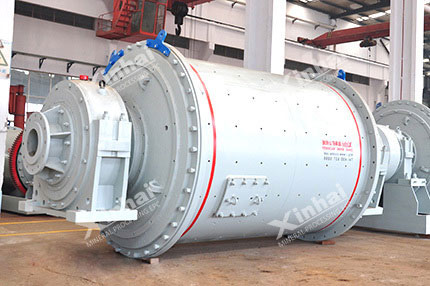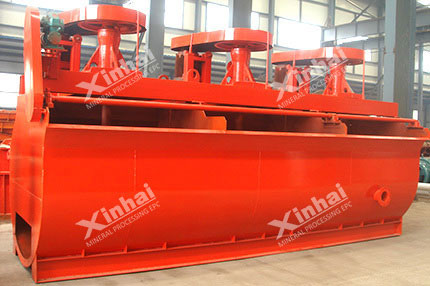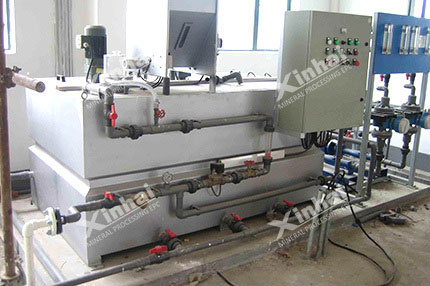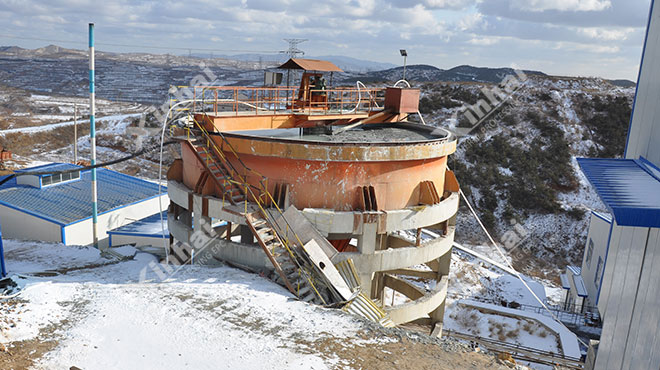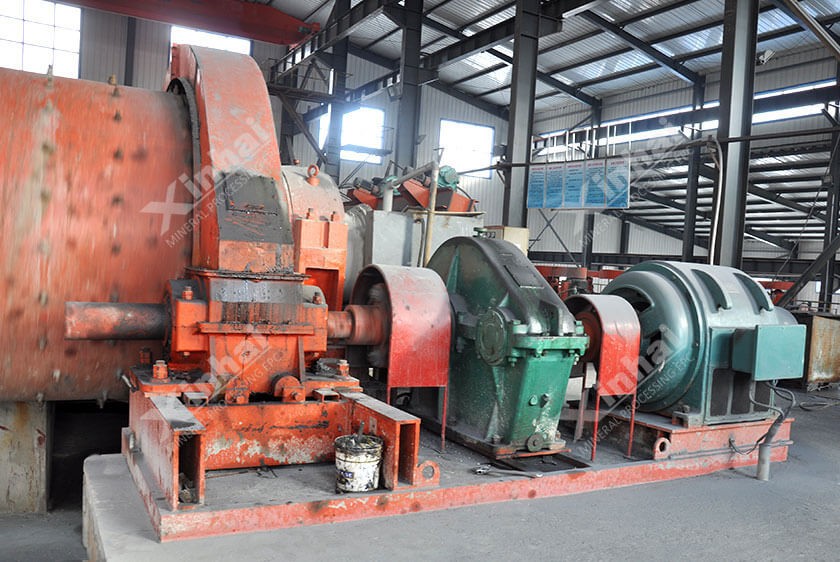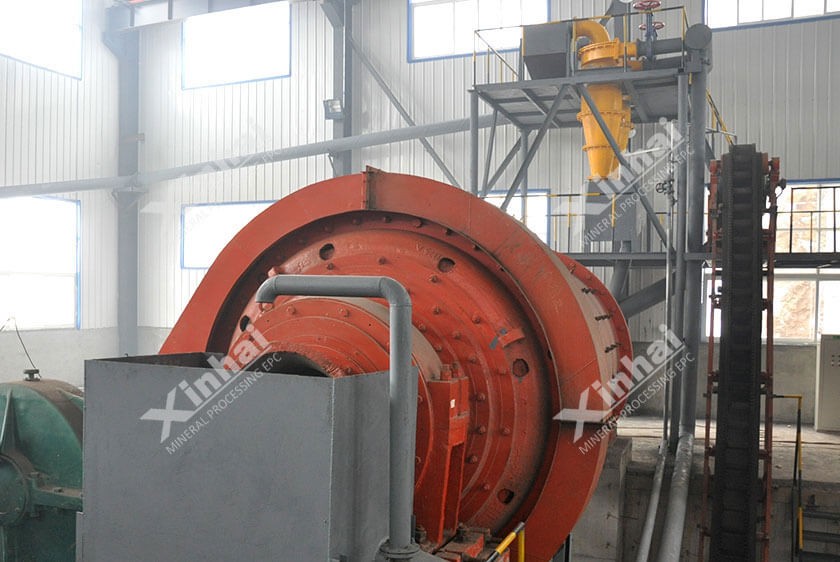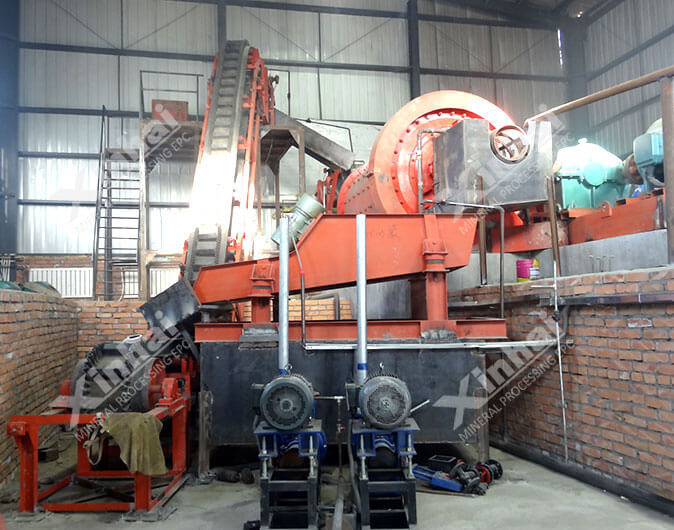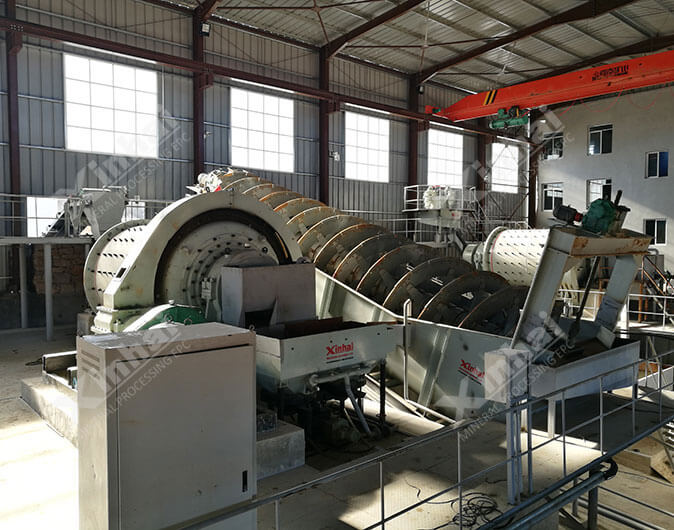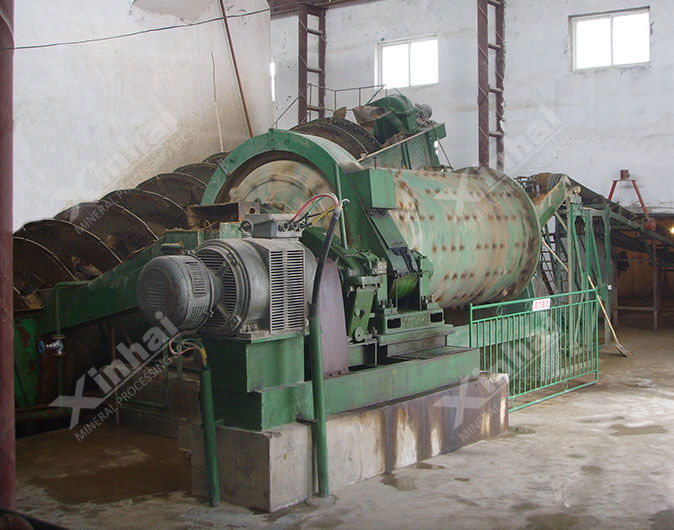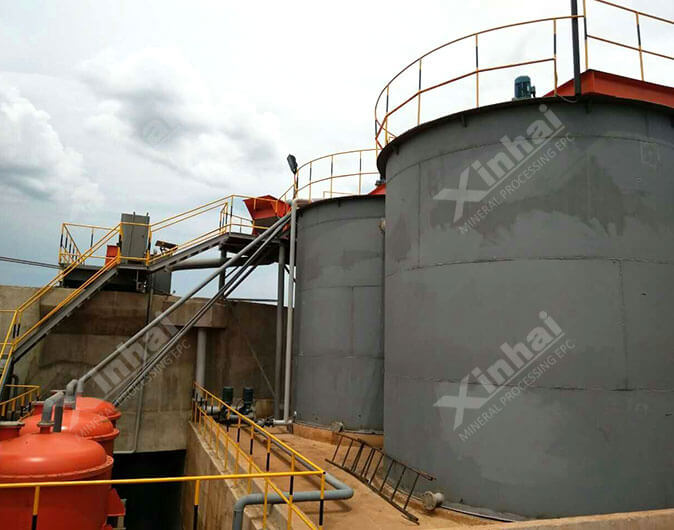Xinhai Solution
-
01
Crushing and screening: raw ore was fed by vibrating feeder to the jaw crusher for coarse crushing, then the product was transported by 1# belt conveyor to the fine ore bin; the size of final crushed product is ≤150mm;
-
02
Grinding and classification: two-stage grinding process was adopted; autogenous mill was used in the first stage, where ground materials were classified by linear screen; oversize materials returned to the autogenous mill to form the first-stage closed-circuit grinding; undersize materials were pumped by slurry pump to the cyclone for classification. Settling materials entered the grid ball mill to form the second-stage closed-circuit grinding. At the same time, cyclone overflow flowed by gravity to the flotation process. The final grinding fineness was -200 mesh (65%).
-
03
Flotation: the process of prioritized molybdenite flotation and separating tungsten from flotation tailings was adopted. Molybdenum roughing and scavenging adopted the flotation process of one-stage roughing, two-stage concentration and two-stage scavenging; tailings flowed by gravity to the tungsten flotation process. Molybdenum concentration adopted the flotation process of seven-stage concentration; tailings returned to the previous process, and concentrates entered the dewatering system. Tungsten flotation adopted the flotation process of two-stage roughing and four-stage scavenging; flotation tailings were pumped by slurry pump to the tailings pond; roughing concentrates were pumped by slurry pump to the deep-cone thickener and then treated under high temperature to remove reagent. Tungsten concentration adopted the process of five-stage concentration and two-stage scavenging; slurry after thickening and reagent removal returned to the tungsten concentration process; tungsten concentrates were sent to the dewatering system, and tailings returned to the scavenging Ⅲ process.
-
04
Concentrates dewatering: two-stage mechanical drying was adopted. Molybdenum flotation concentrates were pumped to the deep-cone thickener and then dehydrated in the automatic hydraulic chamber filter press; filtrate returned to the molybdenum concentration process, and filter cake was transported to the fine material dryer (the water content of molybdenum concentrates was ≤4% after drying). Tungsten flotation concentrates were pumped to the deep-cone thickener and then dehydrated in the automatic hydraulic chamber filter press; filtrate returned to the tungsten concentration process, and filter cake was stacked in the concentrates pond.



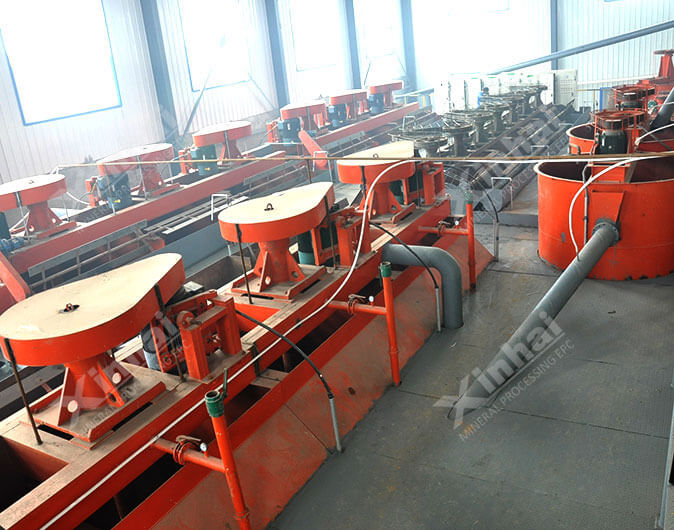
 Consult
Consult
 Leave Message
Leave Message zz540045886@gmail.com
zz540045886@gmail.com 0086 180 0117 3032
0086 180 0117 3032